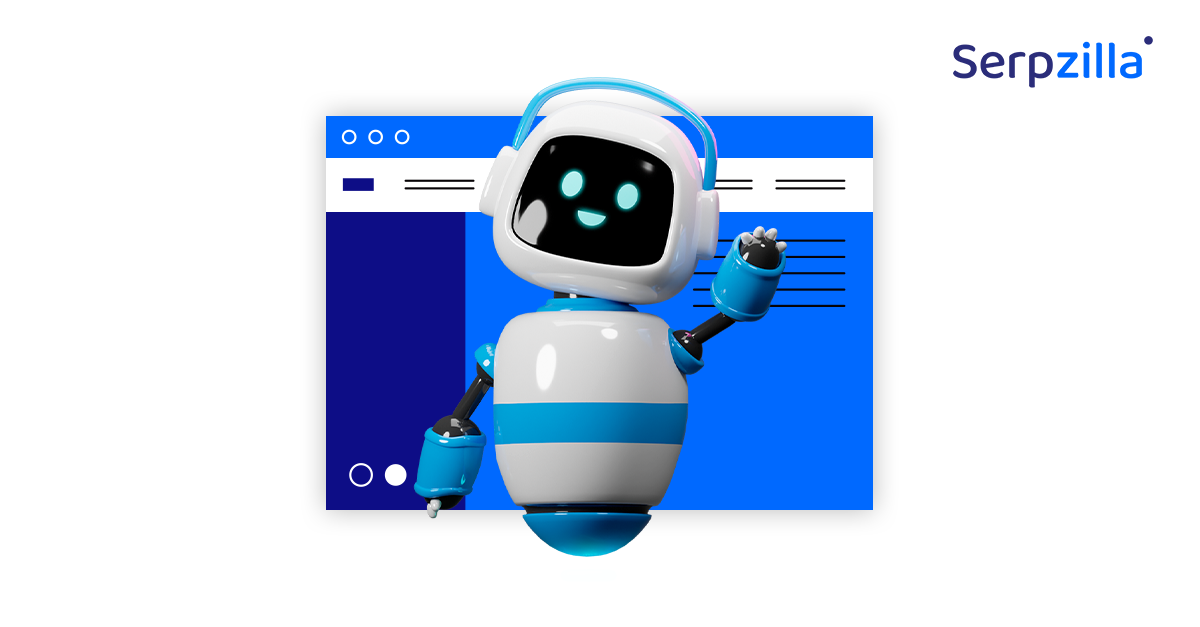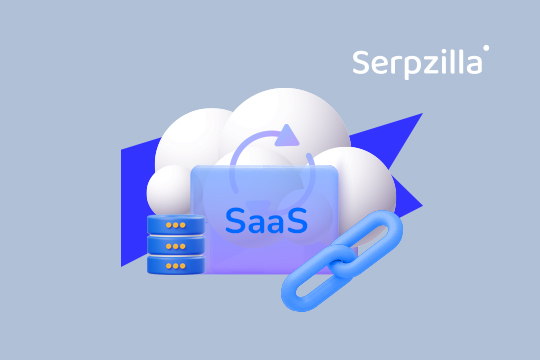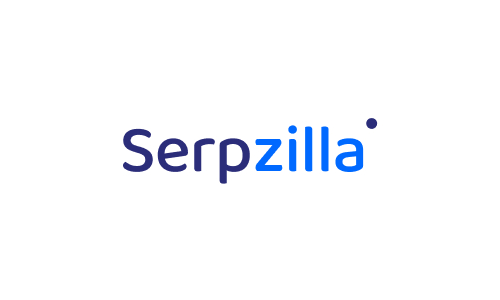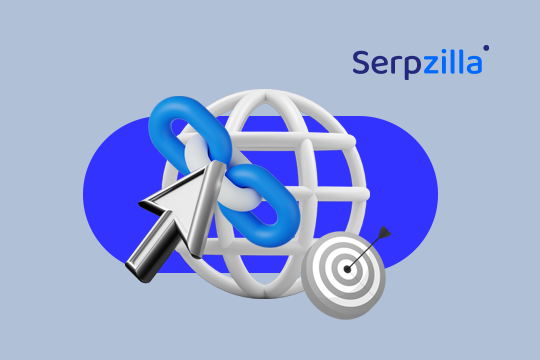Google’s AI Overviews (formerly known as Search Generative Experience or SGE) are a relatively new search feature and it reflects a major shift in how users get answers in search results.
This shift marks a rise of so-called zero-click searches: users rely on AI Overviews and similar search features to give them the necessary information, without having to click on a link in SERP. In 2024, zero-click searches constituted up to 60% of all searches. In 2025, according to Wordstream, up to 65% of Google searches now end without a click, and on mobile devices the number soars to over 75%. As you can see, this trend continues to grow.
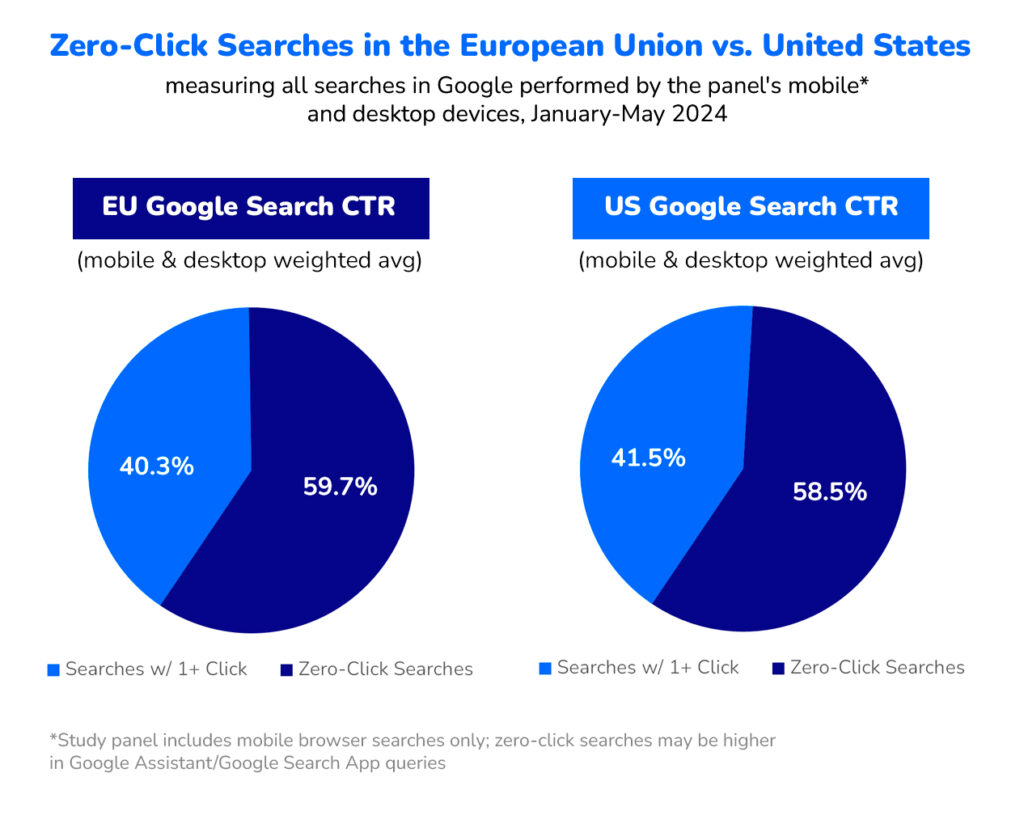
What does it change for SEO? Many things. Less traffic and conversions, for one. But Google also compiles its AI Overviews from information available on the Internet. This means that optimizing for AI Overviews can help gain visibility and get you to the SERP top as AI Overviews are always shown on top and feature source links.
In this article, let’s take a closer look at what you can do to have your content be picked up for Google AI Overviews.
What Are Google AI Overviews
One of the key values users see in using various AI and LLM models is speeding up routine tasks. This includes search. How was search operating before AI? Google already had refined algorithms that offered highly relevant search results. Users still had to scroll through several pages after entering their query.
Relevance is important, but most people want to quickly grasp the main idea or compare multiple sources to form their own opinion. Often, what they really need is just a brief summary of something much larger and more complex.
Thus, Google’s AI Overviews respond to a key issue of our time: they introduce yet another time-saving workflow, this time – for search.
Google uses its own LLM Gemini as a basis for AI overviews. It’s customized to synthesize veritable, detailed yet concise answers and draws from multiple available sources. According to SurferSeo, AI Overviews use approximately 8 sources per each response, but at times they can use as many as two dozens.
Answers can be formatted differently, depending on the nature of the search query. They can combine visual, textual and video formats, lists, comparison tables, various listings, maps, etc. You can also interact with them, going for a followup. Another kind of interaction is changing suggested sources: if your search implies a suggestion, like ‘where to go for dinner with atmosphere in a particular area, AI Overviews can suggest several places and have a ‘replace’ button available for each. If for some reason one variant doesn’t suit you, you can click the button to and see more options.
Diagram of how Google AI Overviews work
AI Overviews vs. Featured Snippets
As of summer 2025, Google users report that AI Overviews are shown to them far more often than Featured Snippets. Google Featured Snippets, which is also an ML-powered feature, is far from gone though. Let’s break down the difference between the two:
Designer task: make this a presentable table
| Aspect | AI Overviews | Featured Snippets |
| Source | Multiple authoritative sources | Single, authoritative webpage |
| Format | Conversational, multi-paragraph summaries with citations, varying layouts (tables, lists, etc.) | Extracted paragraph, list, table, video, definition, etc. |
| Function | Provide in-depth, AI-generated summaries of information, often compiling insights from multiple sources | Deliver a concise, direct answer to a question, pulled verbatim from one page |
| Trigger | Complex, research-based, or nuanced queries | Fact-based, definition-driven, or direct answer queries |
| Interaction | Often includes follow-up questions and links to expand answers | Static, no interaction, includes link to source |
| Visual | Colorful design, citations, and “expand” options | Format is usually more simplified. Most Featured Snippets are textual, but can include lists, images, etc. |
| Appears In | Top of search results, often above ads and organic listings | Top of search, usually under ads but above regular organic results |
Below is an example of a featured snippet:
And here’s an example of an AI Overview:
How Google AI Overviews Work: Ranking Factors
As usual, Google doesn’t disclose the under-the-hood algorithms which select websites and pages for AI Overviews. However, experts’ observations show that there are a few defined patterns. Knowing these patterns will help you alter your SEO strategy and improve your chances of being picked for the coveted ‘zero position’ in the AI Overviews.
Let’s take a close look at these factors.
- When AI Overviews match a query and available information, they use a complex semantic approach.
For example, if you are searching for “Healthy vegan weight loss plans with menus and exercise routines for 30+ women”, Google will likely split this complex query into following:
- Healthy vegan menus
- Healthy weight loss for women over 30
- Exercise routines for women over 30
- Exercise routines for weight loss for women
- Vegan weight loss menus
Then it searches for information and compiles a brushed up AI overview. What does it mean for you as a SEO who is promoting, let’s say, a site with exercise routines? That if you show enough authority, trustworthiness and rank for one of those sub-queries, Google can still include you as a source for the overview even if your page doesn’t match the query per se.
The biggest difference with Featured Snippets is here, is you don’t have to direct-match.
- Many sources selected for AI Overviews already rank high for related queries.
As SEO experts have already discovered, Google usually takes information from the top SERP results for related queries when it breaks down the original complex search. According to SurferSeo’s research, 70% of sources in summaries come from the top 10 organic search results.
For SEO, this means that you have far more chances of being selected for AI Overviews if your regular SEO efforts already bring good results. In Google’s own words, the same foundational SEO best practices work for AI Overviews. Thus, everything that works for getting to the first SERP page, such as link-building, technical SEO, outreach, also ultimately works for getting to AI Overviews.
- Google AI Overviews often pull from user-generated content and social media
Here’s a significant shift for SEO professionals. Apparently, Google AI Overviews are looking for a ‘trust consensus’ about the same source across multiple platforms. Rich Sanger research states, for example, that the most frequently linked URLs included YouTube (3.88% from youtube.com and 2.59% from m.youtube.com), Wikipedia (3.76%), and less frequently, Southern Living (1.53%).
This confirms that If the source is quoted and mentioned on a variety of social media, blogs and UGC platforms such as Reddit or Quora, it sends a trust signal.
So, if you have a Reddit account with good karma and several years of posting behind you, you can put it to good use. It is also recommended to expand on guest posting in vetted blogs.
- Optimizing for informational search intent and LSI-keywords gives you better chances
It is rather apparent now that Google AI Overviews rarely appear for purely transactional queries, but very often for informational requests. For example, according to Semrush AI Overviews Study, where over 10M keywords were analyzed, over 88% of queries that triggered Google AI Overviews were informational.
Example:
Query ‘buy megalodon tooth online’ produces neither AI Overviews nor Featured Snippets, instead starting with sponsored results immediately.
However, ‘where can I search for fossil megalodon teeth’ prompts an AI Overview, where most of the sources are websites which also sell fossils online.
How to get Google AI Overviews
Most SEO experts agree that AI Overviews are still evolving and in its current stage can still be considered an MVP (minimal viable product) that’s being heavily tested. This means, it can still change a lot.
There are a number of experts that also raise an issue of trustworthiness of AI-generated Overviews, generally because of regular data accuracy issues associated with all LLM AIs.
It still doesn’t change that today, this very moment, being featured in AI Overviews can boost your visibility when zero-click searches are starting to prevail. Here are several best practices to increase your chances:
1. Optimize for Informational Search Intent and Question-Based Queries
✅ What to do:
Create content that directly answers common and long-tail questions using H2/H3 headers (e.g., What is X? How does Y work? How does Z compare to A?). Structure each page to answer one or several specific questions clearly. Use long-tail and LSI keywords to increase your chances of being picked up for complex search queries.
💡 Why it matters:
AI Overviews are triggered by informational queries, especially those involving research, comparisons or varying opinions on the subject. Structuring your content around user questions improves your chances of being selected.
🚀 How it helps:
When you clearly map your content to the user’s intent, you make it easier for Google’s AI to extract answers and cite your site. It also helps AI to summarize your content correctly and without hallucinations.
🛠 Tip: Use tools like AlsoAsked or AnswerThePublic to discover actual questions users search.
2. Add E-E-A-T Signals (Experience, Expertise, Authority, Trustworthiness)
✅ What to do:
Include detailed author bios, cite trustworthy sources, use HTTPS, show awards/credentials, and link to expert profiles like LinkedIn.
💡 Why it matters:
Google puts a special emphasis on trust when it selects sources for AI overviews. And it wants to avoid inaccuracies in its AI summaries. It favors sources which score high for E-E-A-T and especially in Your Money Your Life (YMYL) niches like health, finance, and legal. According to Semrush AI Overview study, Science (+22.27%), Health (+20.33%), People & Society (+18.33%), and Law & Government (+15.18%) are the industries experiencing the largest share growth of AI Overviews.
🚀 How it helps:
Pages with stronger E-E-A-T raise your trustworthiness level and make you a reliable source.
🛠 Pro Tip: If you are keeping an expert blog, include a full author bio with qualifications in each post. If possible, include author credentials and accolades on external sites to boost trust.
3. Build Topical Clusters (Not Just Standalone Content Pieces) and Link Clusters
✅ What to do:
Organize your content into tightly connected topic clusters with a central pillar page and multiple supporting articles linked internally. Introduce link clusters into your link-building strategy.
💡 Why it matters:
Google favors subject-matter expertise. A single blog post isn’t enough, but clusters show depth and breadth of coverage. According to Rich Sander research, when related queries were added to the direct match queries, the percentage of links from both the direct match and related queries in the top search results increased to 60.4%.
As for link building, a series of topically interlinked posts across multiple sources which all link to the same piece of your content boost its trust and credibility and improve its chances of being viewed as a good candidate for Google AI Overviews.
🚀 How it helps:
Being seen as a niche authority increases your chances of being selected in Overviews across related queries.
🛠 Tool: Serpzilla is great for building link clusters quickly and safely. We offer a vetted database of potential referring domains, and you can use 40+ filters to search for and create a pool of highly matching and relevant link placement prospects.
You also have full control of your link placement and have multiple options of securing a backlink, depending on whether you need it short-term (rented links) or long-term.
4. Focus on Readability and Conversational Language
✅ What to do:
Write in a clear, concise, and friendly tone. Use short sentences, plain language, and avoid keyword stuffing. Your content should be original and score low on plagiarism and GPT-meters. It is recommended to avoid ambiguity, double meanings and do your fact-checking.
💡 Why it matters:
AI Overviews aim to sound like a human answering a question naturally. Dense, jargon-heavy content is less likely to be used. Content which doesn’t semantically match the query in the eyes of Google will not be used either, that is why it has to contain straight-forward, clear answers.
🚀 How it helps:
Your content needs to be not just reader-friendly, but well-scannable and AI-friendly. Like we’ve already mentioned, AI Overviews sometimes get criticized for inaccuracy or AI hallucinations. That is why Google pays special attention to content structure and clarity which could help avoid these issues.
🛠 Tools: Use tools like Grammarly to check your content for clarity and authenticity, ZeroGPT to make sure it’s not picked up as AI-generated content.
5. Use Structured Data and Schema Markup
✅ What to do:
Implement schema.org markup (e.g., FAQPage, HowTo, Article, Author) on relevant pages.
💡 Why it matters:
Structured data helps Google better understand and categorize your content. It enhances visibility in all types of SERP features, including AI Overviews.
🚀 How it helps:
Proper schema can make your content more “machine-readable” which is critical when AI is generating summaries based on factual data.
🛠 Tools: Use Schema Markup Validator and Yoast SEO (for WordPress users).
6. Guest Posting and Backlink Building with Quality Sources
✅ What to do:
Guest posts, especially done in series, check out very many checkboxes in the list of what works if you want to be picked for Google AI Overviews.
- With guest posts, you can have easy access to highly authoritative referring domains in your niche.
- Guest posts have a good chance on getting quoted on social media
- Guest posts work excellently in series across multiple blogs or spread over time which is a great way to create link clusters
💡 Why it matters:
A good backlink still remains a key indicator of trust and reputation, and as we can see, AI Overviews often cite sources from the top of SERP. Blogs send both social and authority signals that Google is looking for when selecting content for AI Overviews. Blog posts also often tend to reply to specific user queries and are very easy to optimize for AI.
🚀 How it helps:
A series of guest posts can kill several birds with one stone: It is great for your overall link building. It allows for simple creation of content clusters, it opens venues for interaction with users. All of this improves your chances of being selected for AI Overviews.
🛠 Tool:
Serpzilla is a tool tailored for sophisticated guest posting campaigns.
We offer features that help you to locate blogs in your niche which would fit your requirements specifically. We also provide several options for link placement, so you can determine how much control you want to have over the link context. And Serpzilla allows you to fully automate routine tasks, such as outreach and communication management.
With Serpzilla, it is also very easy to create a series of high-quality guest posts across multiple blogs.
👉 Start building guest post links with Serpzilla
If you want to dive into a complete and detailed guest posting guide, with a full walkthrough and actionable tips and tricks which will save your time and budget, our SEO experts have made one for you.
FAQ: Ranking in Google AI Overviews
1. What is the difference between AI Overviews and Featured Snippets in Google Search?
Here are the key differences between Google AI Overviews and Featured Snippets
| Feature | AI Overviews | Featured Snippets |
| Source | Multiple trusted pages | Single authoritative page |
| Purpose | Summarize complex or multi-layered queries | Provide quick, direct answers |
| Format | AI-generated summary with citations & context | Usually a short single-format snippet (paragraph, list, video, etc.) |
| Visual Style | Colorful, expandable, includes follow-up prompts | Minimalistic, static text |
| Ideal Query Type | Research-based, comparative, nuanced | Definition-based, fact-based, simple questions |
| User Experience | Feels like a conversation | Feels like a dictionary or excerpt |
2. How to write text content for AI Overviews vs traditional SEO?
If you are optimizing your text content to improve your chances of being featured in AI Overviews, here’s how your writing should differ depending on the search format:
- ✅ Use natural language: AI Overviews prefer conversational, human-like phrasing.
- ✅ Answer questions explicitly: Include Q&A-style subheadings like “What is X?”
- ✅ Structure content clearly: Use short paragraphs, bullet points, and logical flow.
- ✅ Add depth and examples: Go beyond surface-level explanations with real data and context. Add statistics, examples, tips, and walkthroughs.
- ✅ Optimize traditional SEO basics: Continue using title tags, meta descriptions, internal linking, and core keywords.
3. Do websites need to rank in the top 3 to appear in AI Overviews?
No, your site doesn’t have to rank in the top 3. In fact, Google AI sometimes pulls content from lower-ranked pages when:
- ✅ The page provides a more comprehensive or nuanced answer.
- ✅ The content is better structured (e.g., clear sections, schema, concise explanations).
- ✅ The site has strong topical authority on a narrow subject.
- ✅ The page is newer or more recently updated than higher-ranked ones.
- ✅ The content includes first-hand experience or expert perspective that competitors lack.
4. Can small websites appear in Google AI Overviews?
Yes. Smaller sites with focused content, niche expertise, and smart optimization strategies can be featured. AI Overviews value quality, clarity, and authority over brand size.
5. How often should content be updated to stay in Google AI Overviews?
Update frequency depends on your content type or industry:
- 🧠 Tech / AI / SEO – Every 3–4 months
- 💼 Finance / Business Strategy – Every 4–6 months
- 🏥 Health / Wellness – Every 6 months (or with major research updates)
- 🛍️ eCommerce / Product Reviews – Every season or as stock/features change
- 📚 Educational / Evergreen Guides – Once a year (plus rolling tweaks as needed)
- 📰 News / Trends – Immediately or weekly
Freshness signals relevance, especially for fast-moving topics.
6. How do backlinks influence rankings in AI-generated search results?
Backlinks are still one of the strongest signals of content trustworthiness. Google AI Overviews are known to feature content that has been referenced by reputable sites, especially in niche communities or high-authority publications. Strategic guest posting, expert roundups, and PR placement can help secure those links.
7. What tools can help track Google AI Overview visibility?
Here are top tools that let you monitor your appearance in AI-generated search results:
- 🔍 SGEChecker – Free tool to test if queries trigger AI Overviews and if your content is featured
- 📊 BrightEdge Copilot – Tracks AI Overview visibility, impact, and recommendations (enterprise)
- 📈 SE Ranking – Now includes AI Overview trigger tracking with keyword reports
- 🧠 Authoritas – Adds visibility monitoring and heat maps for AI Overview listings
- 📡 SERP AI Tracker – Currently in beta; monitors AI vs traditional SERP placement side-by-side



